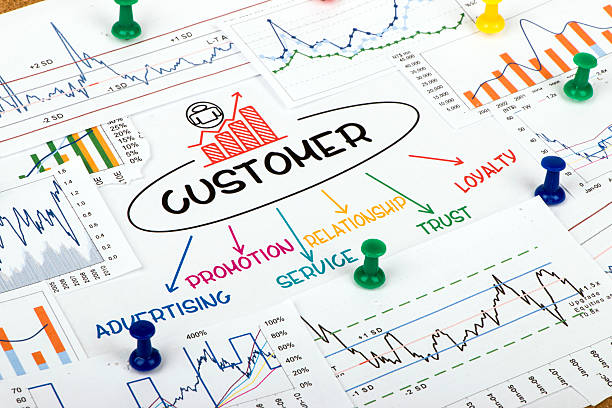Unlocking Loyalty Analytics: Drive Retention and Engagement
In today’s highly competitive market, customer retention is just as crucial as customer acquisition. Businesses are increasingly turning to loyalty...

In today’s highly competitive market, customer retention is just as crucial as customer acquisition. Businesses are increasingly turning to loyalty analytics to help them understand customer behavior and strengthen long-term relationships. Loyalty analytics refers to the practice of using data to track, measure, and optimize customer loyalty programs. By leveraging insights derived from loyalty analytics, companies can enhance their customer retention strategies, improve customer engagement, and ultimately drive business growth.
What is Loyalty Analytics?
Loyalty analytics is the process of gathering and analyzing customer data from loyalty programs to extract actionable insights. This data can come from a variety of sources, including point-of-sale systems, mobile apps, website interactions, and customer feedback. The goal of loyalty analytics is to gain a deeper understanding of customer behavior and preferences, identify trends, and create more personalized and effective loyalty initiatives.
By examining how customers engage with a loyalty program, businesses can determine which aspects of the program are most appealing, which reward structures are most effective, and what can be improved. These insights enable companies to fine-tune their loyalty strategies to increase both customer satisfaction and retention.
Key Benefits of Loyalty Analytics
- Improved Customer Segmentation:
One of the primary benefits of loyalty analytics is the ability to segment customers effectively. By analyzing data on customer purchasing behavior, businesses can identify high-value customers, frequent shoppers, or those who may need additional incentives to stay engaged. These insights allow companies to create targeted marketing campaigns, personalized offers, and loyalty rewards tailored to specific customer groups. For example, a company might offer exclusive rewards to its most loyal customers or create special discounts for customers who haven’t engaged with the loyalty program recently. - Personalized Customer Experiences:
Loyalty analytics helps businesses provide personalized experiences by tracking customer preferences and behaviors. For instance, if a customer frequently purchases a specific product, a company can offer personalized discounts or rewards related to that product category. Personalization not only enhances the customer experience but also fosters a stronger emotional connection between the customer and the brand. When customers feel valued and understood, they are more likely to remain loyal and engage with the brand over the long term.
Personalization in loyalty programs has proven to be highly effective in driving customer satisfaction and repeat business. By using loyalty analytics to offer rewards based on individual preferences, businesses can create a more engaging and rewarding experience for their customers. - Predicting Customer Behavior:
Another powerful benefit of loyalty analytics is the ability to predict customer behavior. By analyzing past purchasing patterns and engagement history, businesses can forecast when a customer is likely to make another purchase or when they might churn. This predictive capability enables businesses to take proactive measures, such as sending reminders or personalized offers, to encourage continued engagement and reduce the risk of churn.
For example, if a customer who typically shops every month hasn’t made a purchase in a while, a company can send them a special offer to reignite their interest. By anticipating customer behavior through loyalty analytics, businesses can optimize customer interactions and improve retention. - Optimizing Reward Structures:
A key aspect of loyalty programs is the rewards system, and loyalty analytics plays a significant role in optimizing this structure. By analyzing which rewards are most appealing to customers and which generate the most engagement, businesses can refine their offerings to maximize effectiveness. For example, if customers respond more positively to discounts rather than free products, businesses can adjust their loyalty rewards to focus on discounts to increase participation.
Additionally, loyalty analytics can help businesses assess the effectiveness of different reward tiers. A company may find that a simple, one-tier rewards system generates more engagement than a complex, multi-tier structure. By leveraging data, businesses can create reward systems that are not only appealing but also efficient and easy to engage with. - Tracking Program Effectiveness:
Loyalty analytics provides businesses with the tools to track the performance of their loyalty programs. By analyzing key metrics such as participation rates, redemption rates, customer lifetime value, and retention rates, companies can assess whether their loyalty program is meeting its objectives. This ongoing evaluation is crucial for identifying areas of improvement and making data-driven decisions to enhance the program.
For instance, if a company notices that a particular segment of customers is not engaging with the loyalty program as much as others, they can investigate potential causes and modify the program accordingly. Regularly measuring the effectiveness of the program ensures that businesses can adapt to changing customer needs and preferences. - Enhancing Customer Retention:
The ultimate goal of loyalty analytics is to improve customer retention. Retaining existing customers is often more cost-effective than acquiring new ones, and loyalty programs are a powerful tool to achieve this. By using loyalty analytics, businesses can identify factors that influence retention, such as the frequency of rewards, the value of offers, and the overall customer experience.
Businesses can also use loyalty analytics to identify at-risk customers—those who have been inactive or whose spending habits have changed. By analyzing these patterns, businesses can take proactive steps to re-engage these customers, such as offering targeted promotions or personalized rewards. These efforts can help reduce churn and improve overall retention rates.
How to Implement Loyalty Analytics Successfully
To make the most of loyalty analytics, businesses need to follow certain best practices:
- Integrate Multiple Data Sources:
Loyalty analytics requires data from various customer touchpoints, including online interactions, in-store purchases, mobile app usage, and customer service inquiries. By integrating data from these sources into a unified system, businesses can gain a comprehensive view of each customer’s journey and behavior. This holistic approach allows for more accurate insights and better decision-making. - Use the Right Tools and Software:
To effectively analyze loyalty data, businesses should invest in the right tools and software. Many loyalty management platforms offer built-in analytics features that can track customer behavior, segment audiences, and evaluate program performance. These tools often come with dashboards and reports that make it easier for businesses to interpret data and take action. - Focus on Data Privacy:
With increasing concerns about data privacy, it’s essential for businesses to ensure they handle customer data responsibly. Loyalty analytics relies on customer data, so it’s important to comply with privacy regulations such as GDPR and CCPA. Businesses should be transparent about how they collect and use customer data, and customers should have the option to opt-out of data collection if they choose. - Make Data-Driven Decisions:
The key to successful loyalty analytics is taking action based on the insights gathered. Businesses should use data to inform decisions about reward structures, marketing campaigns, and customer engagement strategies. By continuously refining loyalty programs based on data-driven insights, companies can ensure that their programs remain relevant and effective. - Regularly Evaluate and Adapt:
The business landscape and customer preferences are constantly evolving, so it’s important to regularly evaluate and adapt loyalty programs. By continuously analyzing loyalty data, businesses can identify emerging trends, customer needs, and potential areas for improvement.
Conclusion
Loyalty analytics is a powerful tool for businesses seeking to improve customer retention, boost engagement, and drive long-term growth. By leveraging data to understand customer behavior, personalize experiences, and optimize loyalty programs, businesses can foster deeper connections with their customers and create more effective loyalty strategies. By integrating loyalty analytics into their overall business strategy, companies can unlock the full potential of their customer base and stay ahead of the competition.






